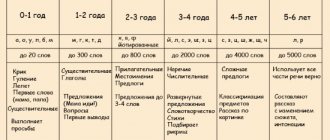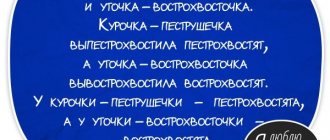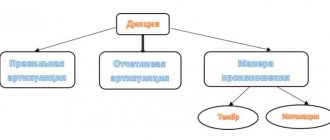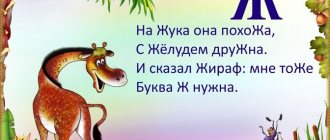Excellent tongue twisters for diction: Pxhere Correct articulation is a prerequisite for quality interpersonal communication. To achieve correct pronunciation of sounds, you need to train your speech apparatus. The best assistants in this matter are tongue twisters for diction. They are memorized and repeated with children, but they are also useful for adults, especially those whose profession is related to rhetoric - teachers, announcers, actors, PR managers, etc. We offer a selection of tongue twisters with which you will achieve perfect articulation.
Tips for successfully developing diction
When a person studies with a professional, it is easier to improve diction than when working independently. Speech therapists give advice on how to make home learning interesting, useful, and effective.
- Conduct classes every day. Daily work on powerful exercises allows you to improve your diction in a few weeks.
- Allow 15-30 minutes a day for speech gymnastics, depending on age.
- When teaching diction, it is customary to record speech on a voice recorder and listen to it afterwards to mark achievements.
- You need to perform exercises according to the principle from simple to complex.
- In addition to classes, it is necessary to read fiction to enrich your vocabulary.
In this way, you can achieve a significant improvement in diction. A beautiful and well-placed voice makes it possible to influence people’s opinions in communication, increase status, and makes the conversation easy and relaxed, unburdened.
Improving diction in children
The main difficulty for children when pronouncing complex words is the rapid change of articulatory position, when it is difficult to rebuild the speech apparatus depending on the subsequent changing sound. Before you start working with your child directly on diction, you need to conduct speech gymnastics aimed at improving articulation.
Carry out exercises to develop the muscles of the speech apparatus:
- Make the sound A with your mouth wide open. The child must imagine that he is speaking into a megaphone.
- Make the sound O, stretching your lips as far as possible.
- Exercise “Smile”, when the child stretches his mouth wide, pronouncing the sound I.
- Make the sound U, extending your lips into a tube as far forward as possible.
Breathing exercises help set up your speech apparatus before reading texts for diction. It is necessary to teach the child to distribute breathing correctly:
- on a deep breath, pronounce the syllables: “house”, “bom”, “out”, retaining the air until the end of the pronunciation, distributing it to each word;
- blow out an imaginary candle, but slowly, gradually blowing out the air;
- pronounce sentences, at the beginning of the first word, take an imperceptible deep breath, distribute it until the end: “They found a pair of boots and 12 galoshes on Tamara,” “Mom loves Masha, and Masha loves mother.”
It is necessary to move on to reading texts after an articulatory warm-up. Spend at least 15 minutes on the preparatory stage. Speech therapists, when working with preschoolers and schoolchildren, advise using poetry and humorous texts so that the learning process is not a burden. While reading, it is important to monitor correct articulation, clear pronunciation of each sound, and voice placement. Diction training for children is carried out using the following texts, following the main rule: from easy to complex.
- Read the text, clearly pronouncing the sounds: sh, zh, h, shch, ts:
“The black lapwing, not bored, chirped over a cup of tea. The hedgehog has a hedgehog, the grass snake has a snake. If you want to eat rolls, don’t sit on the stove. Well done against the sheep, and against the well done the sheep itself. Sasha walked along the highway and sucked on a dryer. Two puppies are nibbling grass in the corner, cheek to cheek. The student was studying his lessons, his cheeks were covered in ink.”
- Read the text slowly at first, watching the pronunciation of individual sounds, and then speed up the pace.
The rhyme amuses the children and makes the process of working on diction interesting. You can work additionally with this text: give the child the task of reading it sadly, cheerfully, angry, laughing, restrained, calmly, loudly, quietly. It is good to train individual sounds: ch, r, k, s, asking the child to highlight them intonationally and articulatorily when reading.
Speech therapists use texts with pictures in practice for preschoolers and schoolchildren. They not only help improve diction, but also stimulate the development of memory, attention, imagination, thinking, and logic.
When working with preschoolers, the teacher (parent) reads the text, the child looks at the picture, continues the sentence, pronounces intonationally and clearly all the necessary imitative words, exercises in the process of reading a fairy tale, and repeats after the adult. The student can independently read a fairy tale and complete assignments. An adult only monitors the clarity and correctness of speech.
How to improve diction at any age
Both children and adults can improve their oratory skills. Diction training depends on the choice of exercises and texts, source material (deviations in speech). Texts for training diction and speech are used according to the principle from simple to complex. You can start working with a combination of complex consonants. When working through the exercise, it is important to pronounce each individual sound correctly so that it is clearly audible to the interlocutor. First, all letter combinations are pronounced, then the main ones are highlighted, where speaking is more difficult, in order to hone them.
Speech therapists advise monitoring the speech apparatus in the mirror when pronouncing sounds. The mouth, teeth, tongue, lips, cheeks should actively move and not be in one position. If U, then these are lips like a tube, O - an oval extended forward, A - the mouth is wide open, W - the teeth are closed, the mouth is smiling, etc. At first, the syllables are spoken slowly, clearly highlighting a separate sound, then you need to speed up the pace, but do not lose clarity of pronunciation: zhdr, krlp, mkrpv, mpnkr, smprv, shnptm, kzhdo, adzhvk, shlkat, kshto, shlotk, ktsch, shtko, kpt, TPK, vaztd, mkrt, jr, grlt.
From syllables you can move on to words. The task remains constant: clearly pronounce each sound in a word, first slowly, then increasing the pace. Upon completion of the exercise, a person should read words quickly, clearly, the organs of the speech apparatus are working actively - “living mouth”.
You can use the following words: armored personnel carrier, department, stay awake, hello, cheer up, ornate, philosophize, philosophize, excite, superbeing, super-anxious, transplantation, transcription, Protestantism, get into the barrel, counter-breakthrough, quarrelsome, controller, usherette, space, parasitology, postscript , explosion point, end, adventure, synchrophasotron, phenolphthalein, tetrahydrocannabinol.
At the end of the warm-up, say a few complex sentences, then move on to reading texts. During gymnastics, it is important to monitor your voice. It should not jump or change when pronouncing complex combinations or individual sounds. It is necessary to maintain an even tone of speech:
- Masha gave Romasha the whey from the yogurt.
- Masha was given porridge, and Sasha was given yogurt.
- Difficult to pronounce words are called difficult to pronounce because they are difficult to pronounce.
- A person who is poorly coordinated has a poorly coordinated gait.
- A trumpeter walks down the street, a trumpet sings, a trumpet roars, a trumpet blows.
- Malanya the chatterbox chattered and chattered that 33 ships tacked, tacked, tacked, tacked, tacked, but didn’t tack.
You need to read the sentences out loud, slowly at first, then picking up the pace. You can take a separate one and read it at an increasing pace until perfect pronunciation at a high speed is achieved.
Improving diction in adults
Texts for the development of speech and diction for adults differ from those for teenagers in complexity and volume. Speech therapists advise starting work on clear and correct pronunciation with difficult tongue twisters. Before a speech, any speaker or announcer works on articulation in order to tune the speech apparatus to work. When preparing to read complex texts for diction, it is important to fulfill the following conditions:
- when pronouncing a tongue twister, monitor the position of the speech apparatus, it must work: lips, teeth, cheeks, tongue are in active movement;
- when pronouncing a pure tongue, highlight a certain sound intonationally (drawn out or louder);
- start reading at a slow pace, gradually speeding it up;
- monitor your breathing, distribute it, don’t forget to take air in the next sentence.
You need to not only read the texts, but also monitor the correct pronunciation of sounds and the placement of the articulatory apparatus. You can do exercises in front of a mirror to take care of yourself. With the help of texts, they work on the clarity of pronunciation of certain sounds: sh, r, ch, k, s, sch, c, l.
Foreign tongue twisters
The benefits of tongue twisters in a foreign language are obvious. With their help, pronunciation is improved. The words in English tongue twisters are chosen in such a way as to speak not only quickly and clearly, but also with the correct accent. This is a great addition for language learning. Working on such tongue twisters is necessary not only for people learning a foreign language, but also for those who speak it at a good level and speak to the public at international conferences and symposiums. Tongue twisters exist in different foreign languages.
- English tongue twisters:
“Betty Botta bought some butter, “But, she said, this butter's bitter, But a bit of better butter will make my batter better.” So, she bought a bit of butter better than the bitter butter, And it made her batter better. So, it was Betty Botta’s batter bought a bit of better butter.”
***
“How many cans can a cannibal nibble if a cannibal can nibble cans? As many cans as a cannibal can nibble if a cannibal can nibble cans.”
- Spanish tongue twisters:
Pancha plancha con cuatro planchas. Con cuantas planchas Pancha plancha? (Pancho irons with four irons. How many irons does Pancho iron with?)
***
Del pelo al codo y del codo al pelo, del codo al pelo y del pelo al codo. (From hair to elbow and from elbow to hair, from elbow to hair and from hair to elbow).
Improving diction in teenagers
Teenagers also need to start working on developing diction after articulation and breathing exercises. Exercises should be aimed at developing the speech apparatus, pronouncing individual sounds, complex words, and sentences. While working, you need to simultaneously monitor your breathing: at the beginning of a sentence, take an imperceptible breath, distribute it over the remaining time until the end of the speech. On the next sentence, repeat the procedure again.
The following suggestions and exercises are suitable for warming up a teenager. These can be tongue twisters, short poems, pure tongue twisters.
Difficult texts for diction must be taken after successfully pronouncing difficult tongue twisters. When reading a text, it is important to maintain clear pronunciation, train correct articulation, gradually increasing the tempo.
When working with teenagers, it is also important to have interesting and unusual material. Due to their age, children may approach activities irresponsibly. Properly selected exercises will distract you and set you in a positive mood. A cheerful Chinese tongue twister works well in this case.
Once upon a time there lived three Chinese - Yak, Yak-Tsidrak, Yak-Tsidrak-Tsidron-Tsidroni, and three more Chinese women - Tsypa, Tsypa-Dripa, Tsypa-Dripa-Lampomponi. Yak got married to Tsypa, Yak-Tsidrak to Tsypa-Dripa, Yak-Tsidrak-Tsidron-Tsidroni to Tsypa-Dripa-Lampomponi... So they had children: Yak and Tsypa - Shah, Yak-Tsidrak and Tsypa-Drypa - Shah -Sharah, at Yak-Tsidrak-Tsidroni with Tsypo-Drypa-Lampoponi - Shah-Sharah-Sharoni.







